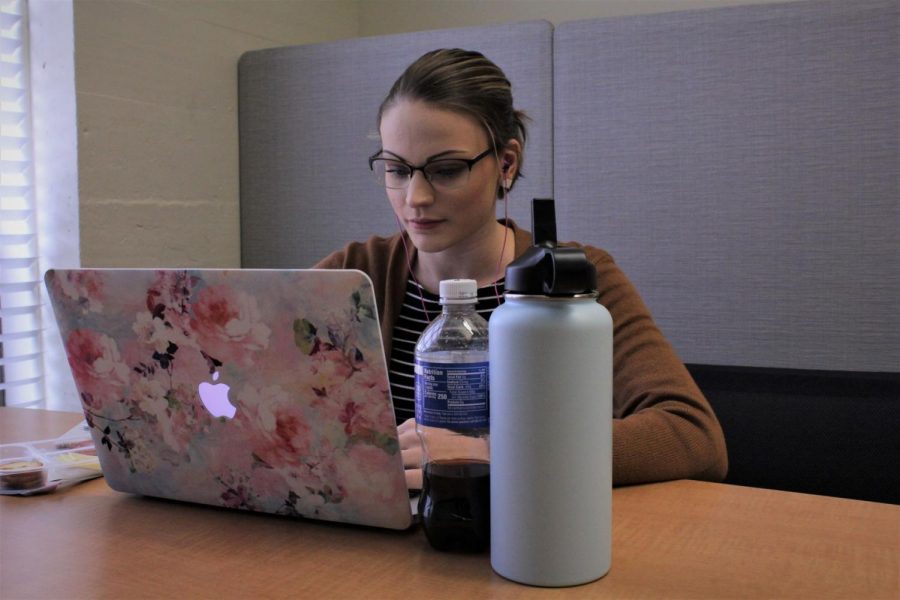Music heals minds
October 6, 2019
We listen to music daily for studying, driving and hanging out with friends. However, there’s something very unique about listening to music for the purpose of healing ourselves.
Professor Tony Silvestri, author, poet and composer, shared insight into how music heals us in a creative sense.
“You intentionally choose a musical experience that will elicit a kind of mood,” said Silvestri. “And then what happens is that you’ve cast a kind of spell. You’ve said to this song, ‘here, I’m going to expose this very wounded part of me and I want you to touch that thing.’ The song then gets deeper into your psyche than it normally would.”
Coming from a personal experience of healing from trauma and loss, Silvestri recently shared with Washburn faculty at the Distinguished Faculty Lecture on how creativity has helped him in his own healing process.
“As I began to touch that wound in a creative way, in an authentic way, with the purpose of touching that wound, then the poetry was powerful,” said Silvestri. “It attracted the attention of composers and it affected healing.”
Associate professor of psychology Linzi Gibson teaches a course called “Music and the Brain” which delves into understanding the scientific side of how music affects our brains.
“It [music] engages most of the brain,” said Gibson. “If you think about our brains as organized into different modules, they call it the modular theory of the mind, we have very specific areas related to visual processing and auditory processing. We have all those different modules, and many of them get activated when we listen to music, particularly those emotion areas.”
Gibson explained the intricacy of how patients with speech problems can utilize different areas of the brain for either speech or music processing.
“Left hemisphere tends to be more language areas, and interestingly enough, almost the exact same areas on the right hemisphere seem to be activated during music,” said Gibson, “so it’s more left hemisphere if you were listening to somebody speak. But if you’re listening to a song, then an almost mirror image on the right side of the brain is what’s activated.”
Gibson also discussed how music can impact patients with movement disorders.
“You start playing music and it helps them with rhythm and timing,” said Gibson. “Which can help them with walking and keeping a regular gait. There are all different types of movements that they can do with the music that they don’t seem to be able to do on their own.”
Both Silvestri and Gibson expressed that when it comes to using music for healing, intention is key.
“Whichever medium of creativity one chooses, the key is in the intention, the focus on the source and feelings of loss,” said Silvestri in his speech. “The more vulnerable I allowed myself to become, the more meaningful the art I produced. And the stronger and more restored to wholeness I found myself becoming.”
Edited by Adam White, Jason Morrison, Jackson Woods



